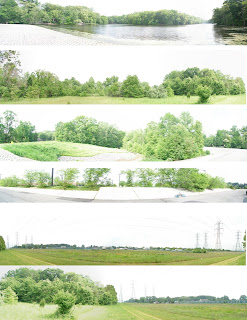Thursday, June 16, 2011
Monday, June 13, 2011
Friday, May 27, 2011
Thursday, May 26, 2011
Monday, May 16, 2011
Monday, May 9, 2011
Artist Rendition
Artist Original
My Picture
At first i was going to pick just one picture to use but my fellow classmates gave me a great idea and that was to combine three pictures into one. So i chose the best three that would fit well together and two were different sides of an aisles and one was a picture of a shelf with laundry detergent. I had to rotate them so the angles would match and then i began the process of combining them. I used the clone stamp tool to make the ground match and i did the same for the top part of the picture. For some finishing touches i dodged and burned some parts and i color corrected the whole picture.
Tuesday, May 3, 2011
Thursday, April 14, 2011
Artist Worksheet
Andreas Gursky
99 Cent
I chose this image because of the colors and the vivid details. I would describe Gursky’s photography style to be very detailed images that are large because he takes pictures of grand places but shows a lot of detail. I am planning on recreating this on a smaller scale or just focus on one spot of the store that has an interesting look. I plan on taking as many shots as I can so at least a few will be great. I will go to different stores and find good angles and good spots with interesting colors and designs.
99 Cent
Andreas Gursky attended the Folkwangschule, Essen school from 1978 to 1980. After failing to find work as a photojournalist, he entered the prestigious Kunstakademie, Dusseldorf, in 1980. After the first year of foundation coursework, he studied photography.
Andreas Gursky was born on January 15, 1955 in Leipzig, East Germany. He had a normal life and his parents ran a commercial photography studio, but Andreas did not seriously consider following their career path.
While in school, he worked as a taxi driver. After failing to find work as a photojournalist he started studying photography. After setting up a color darkroom with friends he always worked in color and he started taking detailed photographs of people doing leisure activities near landscapes.
Andreas Gursky did not work in other artistic mediums. He is a photographer partly because of his parent even though he wasn’t interested at first and mostly because he failed at finding work as a photojournalist. Andreas is inspired by his photography teachers Hilla and Bernd Becher because they taugh him about architecture and Andreas’s photographs are large scaled and a lot of them are of buildings and other landscapes. A hardship that he faced would be him not getting a job as a photojournalist but that led to a successful career as a photographer.
Monday, April 11, 2011
Wednesday, March 30, 2011
Monday, March 28, 2011
Wednesday, March 23, 2011
Monday, March 14, 2011
Monday, February 28, 2011
Friday, February 25, 2011
online tutorials
This tutorial is called vintage photo effect.
I located this tutorial from the main blog page
http://www.emanueleferonato.com/2007/10/15/create-a-vintage-photo-effect-in-photoshop/
I modified this tutorial by tweaking the numbers in the settings for the effect. I think this tutorial is great for giving a picture that vintage vibe.
This tutorial is called frosted pixels.
I located this tutorial on the main blog page http://www.photoshopbox.com/photo-effects/frosted-pixels.html
I modified this tutorial by changing the size of the pixels. This is a great tutorial to give your picture a unique effect.
This tutorial is called dramatic gritty effect.
I located this tutorial on the blog main page http://photoshopfrenzy.com/?p=94
I modified this tutorial by changing some of the settings for this effect. This tutorial is good for making your pictures look dramatic and interesting.
Thursday, February 24, 2011
Tuesday, February 22, 2011
Friday, February 18, 2011
Wednesday, February 16, 2011
Monday, February 14, 2011
Thursday, February 10, 2011
Blog Post 2
What is Aperture?
The aperture of a lens is the diameter of the lens opening; the aperture is like a pupil. You can control the aperture by setting the "Aperture Opening", also known as an F-Stop. The smaller the F-stop numbers the larger the opening is and that allows more light in. A small aperture increases depth of field so foreground and background are sharp and a large aperture decreases depth of field so the background is soft.What is shutter speed?
Shutter speed determines how long the shutter stays open; the longer exposures (like 1 second) give much more light to the film than a 1/1000 of a second exposure. A fast shutter speed can freeze action while slow speed can blur your image.How do you shoot in each mode on your camera?
For Aperture I turn the scroll wheel to A and adjust the F-stops. For Shutter speed I turn the scroll wheel to S and adjust how fast or slow I want the speed.
Subscribe to:
Posts (Atom)

















































